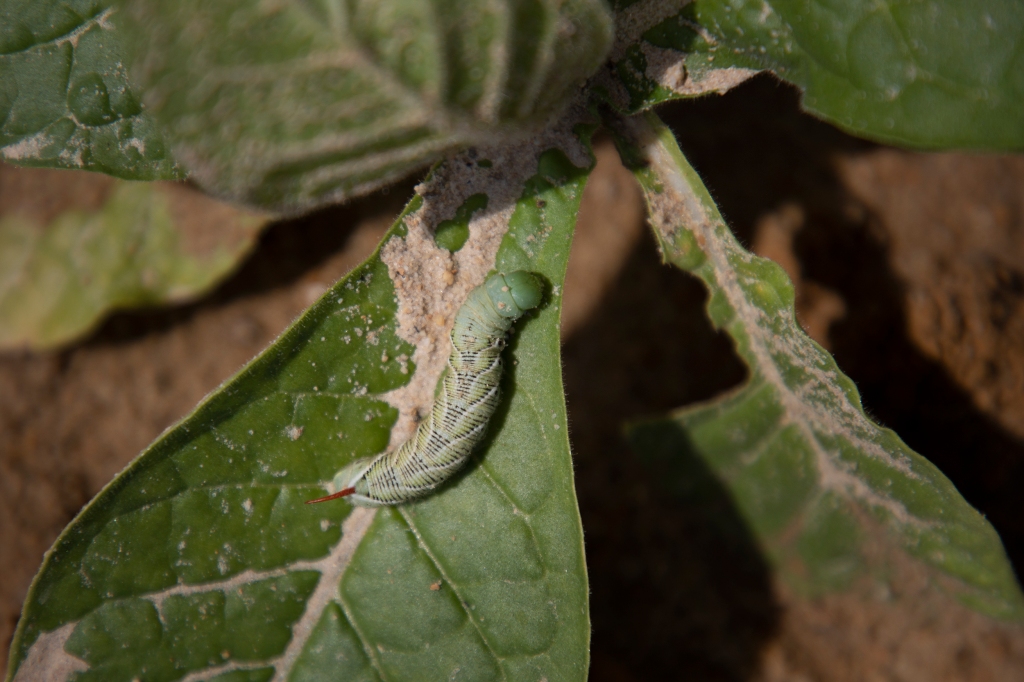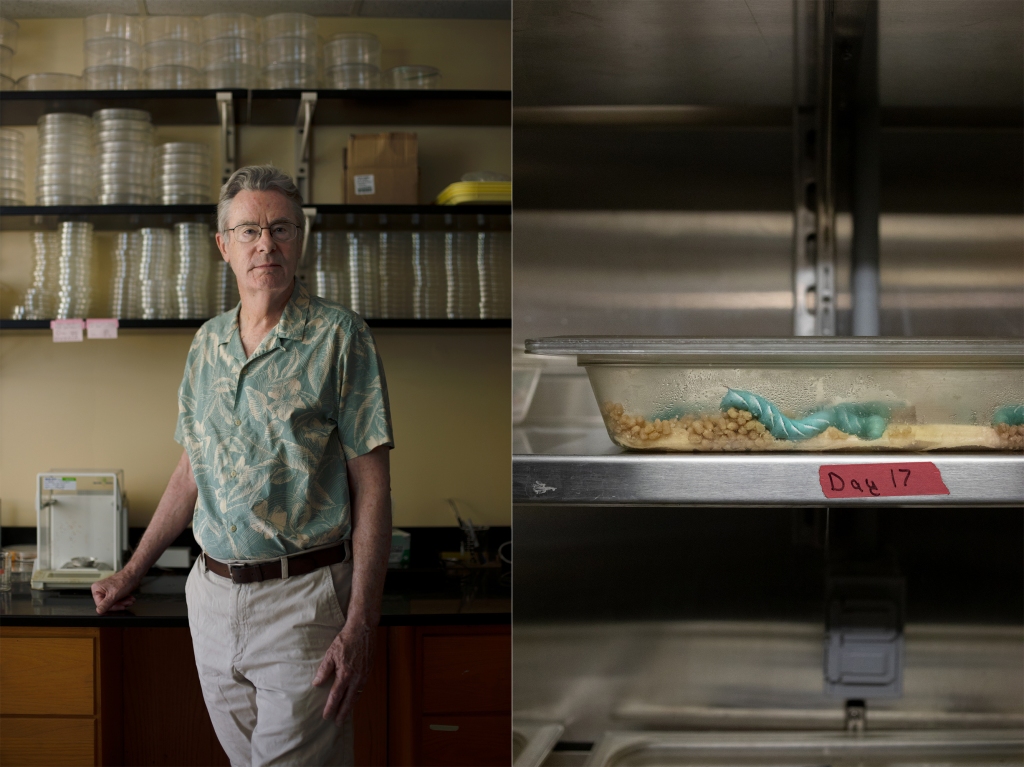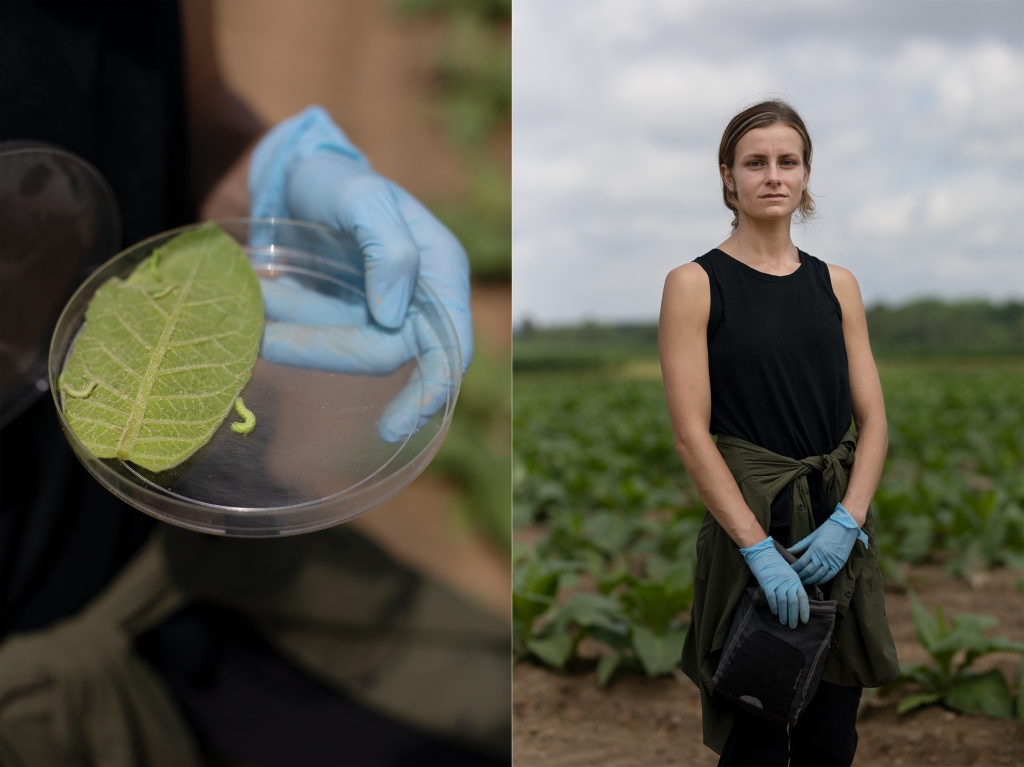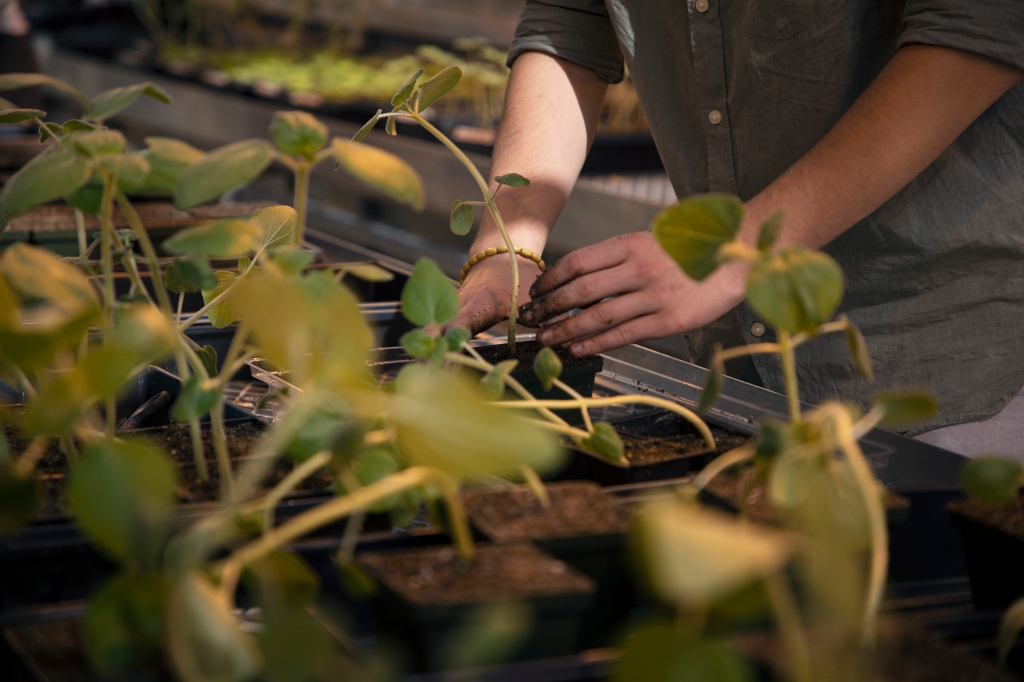
Katherine Malinski is a caterpillar detective. As she walks between rows of tobacco plants, she looks for clues of hornworm caterpillar activity. Tobacco is a host plant for hornworms — the moths lay their eggs on the leaves, which provide food for the caterpillars and serve as a refuge as they develop.
Seeing the remnants of a caterpillar feast, Malinski carefully turns over each leaf. Soon she finds what she is looking for: a tiny hornworm caterpillar. “Found another one!” she exclaims as she pulls a large petri dish from her waist pack, gently picks up the insect, and places it in its temporary home.
Malinski is a PhD student in Joel Kingsolver’s evolutionary biology lab. Kingsolver and his students study how insects and plants respond and adapt to conflicts in the natural environment. They focus on climate change, but also topics like invasive species and managed ecosystems. Much of their work is centered on butterflies and moths.
Currently, most of their research explores how increasing temperatures affect the relationship between a hornworm species (Manduca sexta), a parasitoid wasp (Cotesia congregata), and two hornworm host plants, tobacco and devil’s claw.
“All the work in our lab integrates field studies, laboratory experiments, and mathematical models to investigate insect responses to complex environments,” Kingsolver says. “Insects and temperature are great for that because we can do field studies to explore what we think are important factors and then bring them into the lab and mimic those conditions to better determine what those key factors are.”











